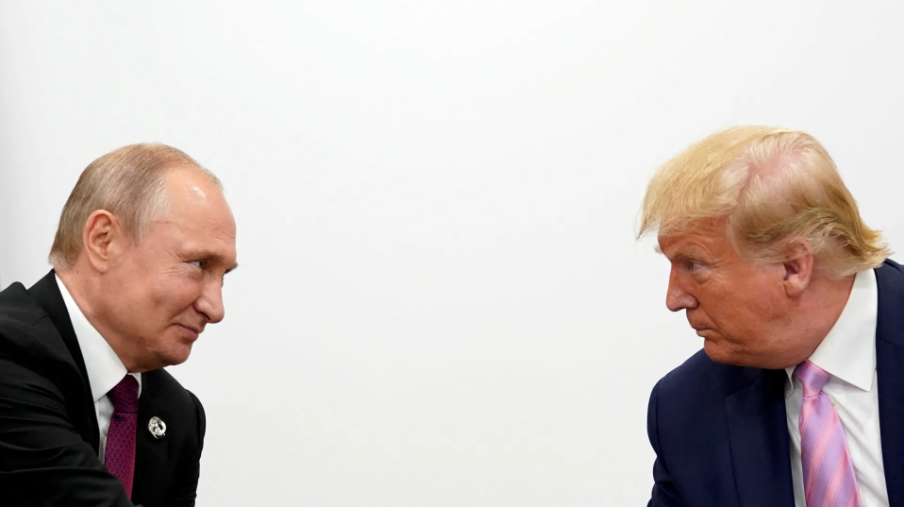The U.S.-Russia contest over Ukraine shows both the persistence of classic power politics and the clash of competing worldviews at a time when the international system is undergoing a seismic process of reordering. The Ukraine war and its potential settlement are upending traditional major-power dynamics.

The war in Ukraine exemplifies certain theories of international conflict. When one power challenges the established order while another clings to the status quo, confrontation becomes inevitable.
Resolving such conflicts depends on a complex dance of capabilities and diplomatic strategies between great powers. Major powers seize these moments to recalibrate the global balance of interests in their favor. The United States and Russia are locked in just such a struggle to shape outcomes to serve their respective agendas. Yet the Ukraine conflict is far from self-contained. U.S.-Russia interactions are complicated by third-party actors whose maneuvers may derail the two countries’ strategic objectives or produce unintended consequences. A closer examination of both nations' strategic aims and constraints illuminates the broader shifts reshaping today’s world order.
The isolation strategy
States employ diverse tactics to manage international conflicts, ranging from disengagement to the severance of ties — collectively labeled the “isolation strategy.” The administration of U.S. President Donald Trump has been experimenting with this approach with regard to the Ukraine crisis. By contrast, military solutions such as conquest or annexation, though decisive, carry prohibitively high risks of catastrophic blowback, even for superior powers. Passive strategies therefore emerge as lower-cost alternatives.
In terms of risks and costs, Trump’s approach to the Ukraine war is neither impulsive nor arbitrary. He and his national security team likely concluded that conventional diplomacy would fail to broker a cease-fire. Instead, they opted for a more risky “reverse pressure” strategy, leveraging U.S.-Russia interactions to coerce Ukraine and its key European backers into accepting a truce.
This quenching thirst with poison tactic, however, carries its own risks. If Russian President Vladimir Putin refuses to compromise as anticipated, it may well erode U.S. leadership in Europe’s security. The 2003 Iraq War, unilaterally started by the U.S., serves as a cautionary tale with its $2 trillion price tag and damage to transatlantic relations.
A vision-driven contest
Moscow’s token concessions to the American 30-day cease-fire proposal were magnified by Trump as a diplomatic triumph — a stark contrast to Putin’s three-year adherence to the “indivisibility of security” doctrine. This principle had conditioned any truce on normalized U.S.-Russia relations and the removal of 28,595 sanctions. The Kremlin’s shift, despite Washington’s refusal to offer reciprocal guarantees, marked a tactical retreat.
In the long run, Russia may emerge as the true victor. By deploying a vision-driven strategy offering visible yet elusive hope, it has avoided direct confrontation with the U.S. while securing the strategic initiative. Obviously, Trump himself recognizes that campaign rhetoric might sway U.S. voters, but it won’t win Putin’s trust. At the 2025 Russian Union of Industrialists and Entrepreneurs conference, Putin reiterated that Western attempts to weaken Russia persist no matter how world situation shifts.
Sky-high war costs further constrain Putin’s room for concessions in negotiations with the United States. Russia’s war spending has surpassed $300 billion over three years, a figure excluding assets frozen by Western states. Moreover, Russia lags markedly behind advanced economies in semiconductor and IT industries by two to three generations. Such a technological gap heightens Russia’s sense of insecurity and shapes its calculus in the Ukraine standoff.
New European strategic dependency
As early as in 1963, U.S. President John F. Kennedy urged Europe to assume greater responsibility for its own security. Yet for six decades Europe has ignored that advice and clung to U.S. military protection, allowing it to pour money into its full-fledged social welfare systems. Trump’s “America first” doctrine has disrupted this tradition, compelling Europe to plan and develop its own security strategies.
This does not spell the end of transatlantic cohesion. European states understand that the Western world, if divided, will certainly decline. Even with strategic autonomy, Europe cannot sever ties with America. Both Cold War-era “Old Europe” and post-Cold War “New Europe” rely on U.S. hegemony to maintain their values, and New Europe remains America’s most valuable strategic asset.
Despite current challenges, the foundation of the transatlantic bond remains intact. When Europe achieves genuine autonomy in security, the relationship will evolve into a partnership among equals, underpinning a true pole in the international system. Even then, a stable transatlantic alliance will continue to serve European strategic interests.
The U.S.-Russia rivalry in Ukraine reflects not only traditional great-power competition but also diverging visions for international rules and the future order amid global power redistribution. The crisis and its potential resolution are reshaping major-power relations in unprecedented ways, heralding an accelerated transition toward a more uncertain world order. The shift does not merely impact regional security. It will also have profound, lasting effects on the global strategic landscape.
Ultimately, the U.S.-Russia contest over Ukraine epitomizes both the persistence of classic power politics and the clash of competing worldviews as the international system undergoes a seismic reordering. The crisis and its potential settlement are upending traditional major-power dynamics, propelling rapid realignment into a world order marked by deepening unpredictability. The shift transcends regional security concerns to reconfigure the geopolitical terrain through enduring structural transformations.